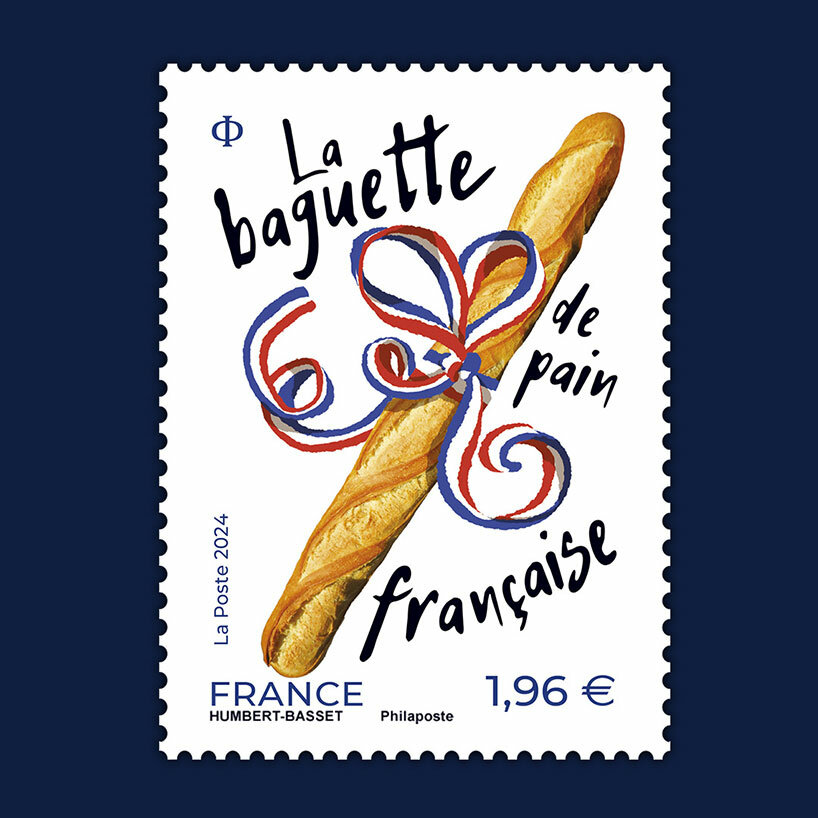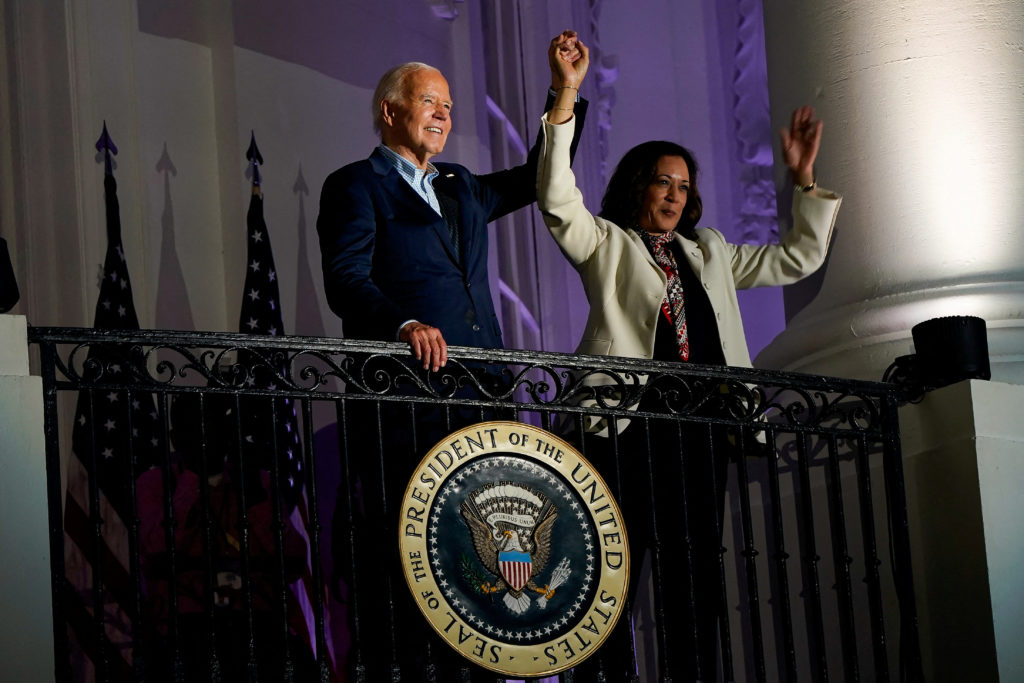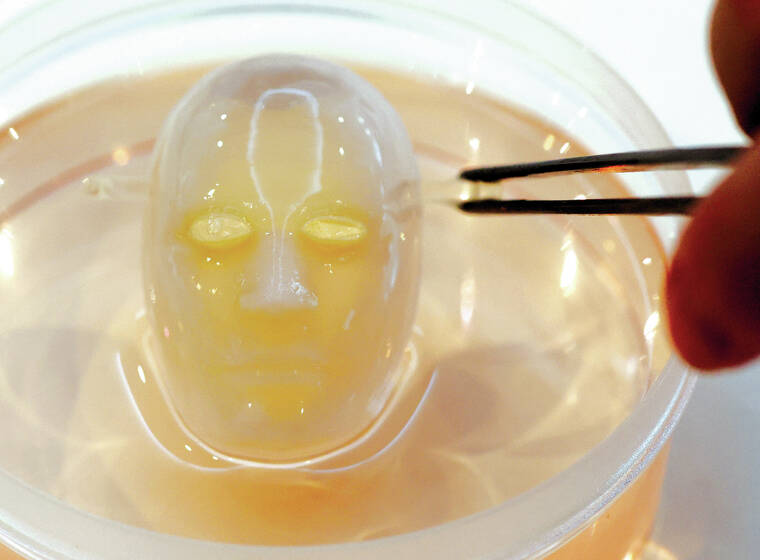뉴스&스피킹(영자신문)
하루 10분이면 영어에 대한 두려움을 극복하고 누구나 유창하게 영어를 구사하실 수 있습니다.
-
 New French Stamps Smell Like Baguettes Visitors to Paris for the Olympics can now send a smell of France home with their picture postcards and letters.
New French Stamps Smell Like Baguettes Visitors to Paris for the Olympics can now send a smell of France home with their picture postcards and letters.
The smell comes from a special stamp showing the country’s famous bread called baguette. The sweet smell, however, may remind you of a French bakery more than an actual baguette.
The stamp was released in May for the day of Saint-Honoré, the saint of bakers. Postal worker Clarisse Briend said the baguette makes people think of France. And she hopes visitors will pick up the stamps along with other official Paris 2024 postcards and stamps. The stamp sells for more than $2 at area post offices.
Pia Schöndienst is a German visitor coming from the Netherlands with her family. She bought the stamps and said she could not smell anything, but her son could smell a chocolate croissant.
"You just have to rub the stamp here like this with your nails," Clarisse Briend said. "You can smell the bread, the baguette."
At the Léonie Bakery in Paris, baker Yasin Robin smelled the stamp and said, “It smells like flan,” a dessert but not the baguette itself. Chief baker Harlem Gbodialo said he could smell something sweet on the stamp while the shop manager Jeanne Barrère compared it to vanilla.
Regardless, Gbodialo added that the bakery expects to have many visitors at their shop near the Champs Élysées. “On top of that the Olympic Games are going to start next week, so it’ll boost our influence in terms of clients, and also the weather’s been nicer lately, so all the factors are coming together to have a great period of Olympic Games, a great party for everyone,” he added.
Eating baguettes is not as popular as it once was, but France still makes around 16 million per day - or nearly 6 billion a year. One story explains that Napoleon Bonaparte's bakers created the long shape to make it easier for his troops to carry.
I’m Jill Robbins.View -
 Learn about US Presidential Campaigns Every four years, the United States holds an election for the president in November. This lesson aims to help teachers and learners understand the political processes and expressions used during the election campaign.
Learn about US Presidential Campaigns Every four years, the United States holds an election for the president in November. This lesson aims to help teachers and learners understand the political processes and expressions used during the election campaign.
The political parties
Let us begin with the expression, political party. In elections, parties organize candidates who share party members’ ideas about how government should operate. They try to win elections to gain and keep political power.
There are two major political parties in the U.S. They are the Democratic Party and the Republican Party. There are other small political parties at the national level. These include the Libertarian and Green parties.
Primaries and caucuses
Each of the U.S. states and territories holds votes early in the election year. In many states and territories, these votes are called primaries. You may know the word “primary” as an adjective meaning “happening or coming first” as in “primary school.” When speaking of elections, it is a noun, but it has a similar meaning – it is the first election in a voting process that takes place over one year.
You might also hear the term caucus. A caucus is also a kind of election, but it is held privately by the party and usually does not involve state election officials or equipment. The Iowa caucus was for a long time the first presidential contest during an election year.
In a primary or a caucus, voters choose the party’s candidates for local and state offices as well as for national offices. The candidates who get the most votes become the candidates for the election in the fall.
Primaries can be “open” or “closed.” Anyone can take part in an open primary election — even members of another party. Only registered party members can vote in a closed primary.
Delegates
In some states, voters choose delegates in the primaries. State party organizations have different rules for choosing them. Delegates are people who will attend their party’s convention, or general meeting.
When a delegate is elected to choose a particular candidate, we say the delegate is pledged to the candidate. To pledge is to promise something.
Conventions
Each party holds a national convention – a large meeting where the delegates officially nominate the candidate that the party supports for the presidential election. The verb “nominate” means to officially choose someone as a candidate for a position. You will hear some other forms of the word in election news.
Nomination
To describe the process of having the delegates choose a candidate, we use the noun form, “nomination.” At the convention, the candidate who gains the majority of delegates is called the “nominee.” The nominee gives a speech to accept the nomination.
The party platform
The party platform is a statement of the ideology of the party and its candidate. At the party convention, the organizing committee shares its platform. The platform is a statement of the policies that the party hopes to put in place during its candidate’s term in office.
The campaign trail
Presidential candidates travel the country speaking to voters at a series of events called rallies. Reporters use the expression “campaign trail” to describe these events. This is a metaphor for progressing along a path toward a goal. The election campaign is sometimes called a “race,” another metaphor comparing the election campaign to a sporting competition.
Debates
Part of the campaign process is for the candidates to debate each other. These are televised events where a reporter asks questions that interest the public and gives each candidate a limited time to answer them. The form of the political debates is not the same as traditional academic debates, where teams compete under clear rules and time limits.
Donors
Presidential candidates and others who run for public office must find money to pay for those rallies, television advertising, and campaign workers. A common way to pay for a campaign is to ask for money. People who give to a candidate are donors. The Federal Election Commission makes rules about how much, when, and how donations can be made.
Polls and the Polls
Researchers get the opinions of voters in an effort to guess, or predict, the results of an upcoming election. They do this with polls, or public opinion studies. This word has two meanings in the elections. One is where a researcher might ask you about your party affiliation and which candidate you plan to support in a telephone call. Your party affiliation is the party you are registered with or that you support.
The other meaning of “poll” is the place where you go to vote on election day. We can also use “polling place.” Schools, religious centers and public buildings can be polling places. In them, voters cast their ballot secretly. That means they fill out their ballot without pressure from others in the room and turn in their ballot to be counted by poll workers.
In the last two election years of 2020 and 2022, people could send in their ballots by mail. But polling places remain important for processing and counting ballots.
Privacy and politics
Now that you have some of the expressions used to talk about the presidential campaign, you should use them with some care. It is not normal to ask someone what party he or she is a member of although many people will offer that information freely.
In some situations, such as among close friends, you will hear Americans talk about the candidates and voice their opinions openly. But when talking with a new acquaintance or a stranger, it is best to avoid asking about political affiliation.
Also, know that some workplaces have rules against political activity, and, in government, most political activity is not legal although people often share their opinions.
I’m Jill Robbins. And I’m Andrew Smith.View -
 Some Cubans Are Turning to Electric Bikes, Vehicles Cuba’s capital, Havana, is famous for its colorful vintage cars. They fill the streets and are often popular subjects for visitors' photographs.
Some Cubans Are Turning to Electric Bikes, Vehicles Cuba’s capital, Havana, is famous for its colorful vintage cars. They fill the streets and are often popular subjects for visitors' photographs.
But these days, Cubans are just as likely to be found traveling around town quickly and quietly on electric scooters made with Chinese parts.
"Electric motorcycles are solving a lot of problems in Cuba, they are already used for almost everything," said Omar Cortina. He is a Cuban hotel worker who recently purchased his first electric vehicle -- a lime-green scooter powered by a lithium battery.
Until recently, Cuba's roads had changed little in the years since former leader Fidel Castro's 1959 revolution. Old cars with old exhaust systems drove along uneven roads.
Today, electric vehicles are an increasingly common transportation choice. Between 2020 and 2022, Cuba-based companies produced more than 23,000 electric vehicles. That number comes from official government sources.
Fuel is hard to find and expensive
Fuel for combustion-powered engines has been hard to find for years in Cuba. People would wait in fuel lines for hours and sometimes even days.
Earlier this year, the price for gasoline increased to five times the usual price. That means a usual 40-liter tank of gas costs more than a state-worker's average monthly earnings. For most Cubans, that made purchasing gasoline nearly impossible.
Public transportation is hardly any better
But costly fuel is not the only problem.
There are fewer buses in Havana than there were in the past. This year, half the bus routes to points outside the capital were cut, state-run news agencies in Cuba report. Fuel and parts to repair old buses are also harder to find.
All these factors have helped to increase the demand for electric vehicles. Products from newly formed companies like Caribbean Electric Vehicles (Vedca) are helping to fill that demand.
Vedca is a joint venture between Chinese investor Tianjin Dongxing Industrial and Cuban state bicycle manufacturer Minerva. It has produced more than 2,000 scooters, bikes, and mini-tricycle trucks in Cuba with Chinese parts.
Juilo Oscar Perez is the company’s director. Perez told reporters that electric vehicles are not just giving people another way of getting around. They are also solving fuel-related problems.
The company, Perez said, has also begun testing a new electric tractor and experimenting with other electric-powered heavy machinery.
Other small Cuban companies also sell electric bikes. Some bikes are basic while others are more costly. The government also recently began permitting imports of much costlier electric vehicles.
Imports of automobiles from the neighboring United States have risen to $24.6 million so far in 2024, the U.S.-Cuba Trade and Economic Council said. There is a growing number of Cubans who want more luxurious electric and hybrid automobiles, including Teslas.
But the number of Cubans who can pay for such vehicles is still small. For Omar Cortina, the hotel worker, just being able to get back and forth from work is enough of a selling-point.
I’m Anna Matteo.View -
 Democrats Back Harris as Biden Leaves Presidential Race Democratic Party lawmakers, some governors, and financial donors are supporting U.S. Vice President Kamala Harris to be the party’s presidential nominee.
Democrats Back Harris as Biden Leaves Presidential Race Democratic Party lawmakers, some governors, and financial donors are supporting U.S. Vice President Kamala Harris to be the party’s presidential nominee.
The move came shortly after President Joe Biden said on Sunday that he would not seek the presidency again. Biden made the surprise announcement on the social media website X. He also endorsed, or threw his support to, Harris.
Harris, who is 59 years old, quickly announced that she would seek the nomination. She said, “I will do everything in my power to unite the Democratic Party – and unite our nation – to defeat Donald Trump.”
Last week, former President Donald Trump accepted the nomination of the Republican Party in the Midwestern city of Milwaukee, Wisconsin. He chose Ohio Senator J.D. Vance as his vice-presidential nominee.
Biden’s decision
Biden’s decision to leave the 2024 race followed rising calls from Democrats urging him to “pass the torch” to a new generation.
In his June 27 debate against Trump, the 81-year-old president often appeared to be unable to complete his thoughts. He also failed to press his case against the 78-year-old Trump or defend his work in The White House. Despite concerns from Democrats about his debate performance and decreasing electoral support, Biden said he would stay in the race.
But on Sunday, he said in a statement, “I believe it is in the best interest of my party and the country for me to stand down and to focus solely on fulfilling my duties as president for the remainder of my term.” Biden’s term ends in six months in January. Biden added that he plans to address the nation about his decision later this week.
In a statement, Harris spoke about Biden’s withdrawal. She said, Biden “is doing what he has done throughout this life of service: putting the American people and our country above everything else.”
The decision came just weeks before the start of the Democratic National Convention in Chicago on August 19. That is the event where the Democratic Party officially decides on its nominee. Before Biden’s withdrawal, the party was considering a virtual vote for delegates before the convention.
Harris’ many firsts
Before becoming vice president, Harris served as Attorney General, a top law enforcement position, in the state of California. In 2017, she was elected to the U.S. Senate. Biden chose her in 2020 as a running mate after her own presidential campaign failed to gain enough support.
If Harris is nominated by the Democratic Party to replace Biden, she would be the first Black woman and South Asian major party presidential nominee in the 248-year history of the United States.
Harris’s public approval rating has largely followed the president’s approval numbers. Some opinion studies say Harris has a little more support than Biden when compared to Trump.
As vice president, one of her early assignments was to deal with the causes of migration in the country’s southern border with Mexico. Harris also oversaw the administration’s efforts on voting rights and election reforms. With a divided Congress, however, Harris was not able to achieve results.
Since the U.S. Supreme Court overturned federal protections for abortion rights in June 2022, Harris has been the leading voice to push for greater access.
To mark the second anniversary of the court decision, Harris told supporters in Maryland, "This is a fight for freedom: the fundamental freedom of a woman to make decisions about her own body and not having her government tell her what to do."
I’m Jill Robbins.View -
 Japanese Scientists Make Robot Face ‘Smile’ with Lab-Grown Skin Japanese scientists have found a way to attach living skin tissue to robotic faces and make them "smile." This breakthrough could be helpful not only in robotics, but also in cosmetics and medicine.
Japanese Scientists Make Robot Face ‘Smile’ with Lab-Grown Skin Japanese scientists have found a way to attach living skin tissue to robotic faces and make them "smile." This breakthrough could be helpful not only in robotics, but also in cosmetics and medicine.
Researchers at the University of Tokyo started the process by growing human skin cells in the shape of a face. Then, they used attachments that are similar to the ligaments in a human to pull the tissue into a wide smile.
First step to other breakthroughs
Lead researcher Shoji Takeuchi is a professor at the University of Tokyo. He said the result is an important step towards building more life-like robots. Using the attachments, he said, “it became possible to manipulate living skin for the first time.”
The study about the smiling robot appeared last month in Cell Reports Physical Science. It represents 10 years of research by Takeuchi and his lab on how to best combine biological and artificial machines.
Living tissue is better for this application than metals and plastics, Takeuchi said. He noted that brains and muscles are more efficient in use of energy and the skin can repair itself.
In the future, the researchers aim to add more elements to the lab-grown skin, including a circulatory system and nerves. That could lead to safer testing methods for cosmetics and drugs absorbed, or taken in, through the skin.
It could also produce more realistic and functional coverings for robots. The remaining issue is how people react to machines that appear almost lifelike, but do not look exactly like humans.
"There's still a bit of that creepiness to it," Takeuchi said about the robot.
The uncanny valley
He added, "I think that making robots out of the same materials as humans and having them show the same expressions might be one key to overcoming the uncanny valley."
The “uncanny valley” is an idea that relates to how humans react to robots or other machines that act like humans. “Uncanny” is an adjective that means “being beyond what is normal or expected.”
Japanese robotics scientist Masahiro Mori published a work, Bukimi No Tani, or “Uncanny Valley” in 1970. It proposed how people would react to lifelike robots, or androids.
Mori thought that at first, people would have positive feelings about robots that look a little bit like humans. But as robots got closer to being realistic human models, he believed those feelings would become more negative.
Those negative feelings are the so-called low point, or “valley,” in a chart that represents the relationship between the human-like appearance of robots and humans’ feelings toward and acceptance of such robots.
I’m Jill Robbins.View

